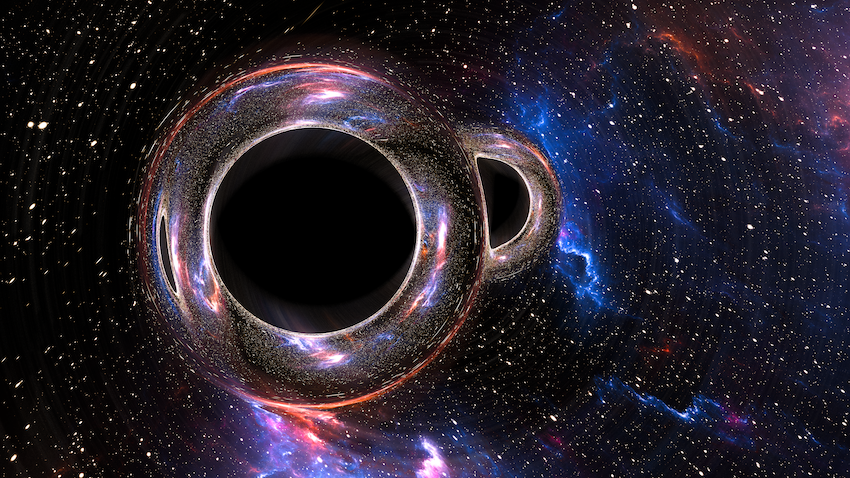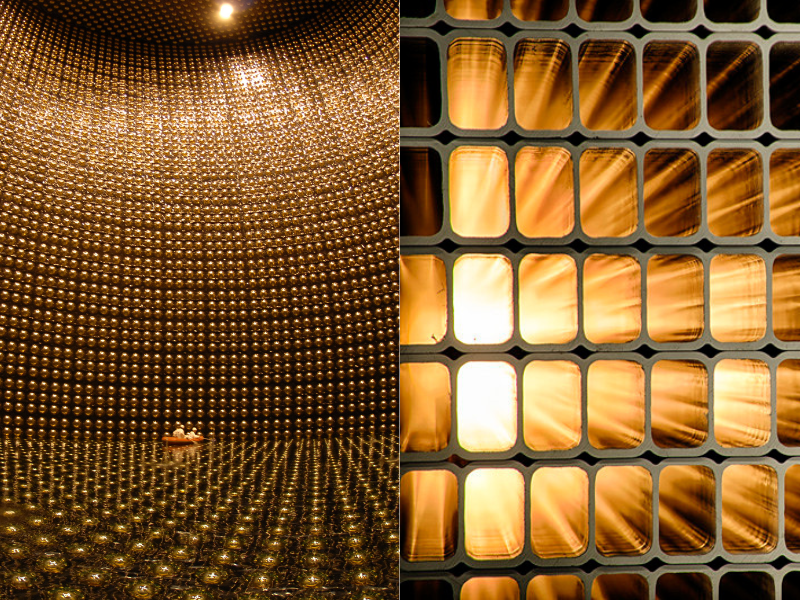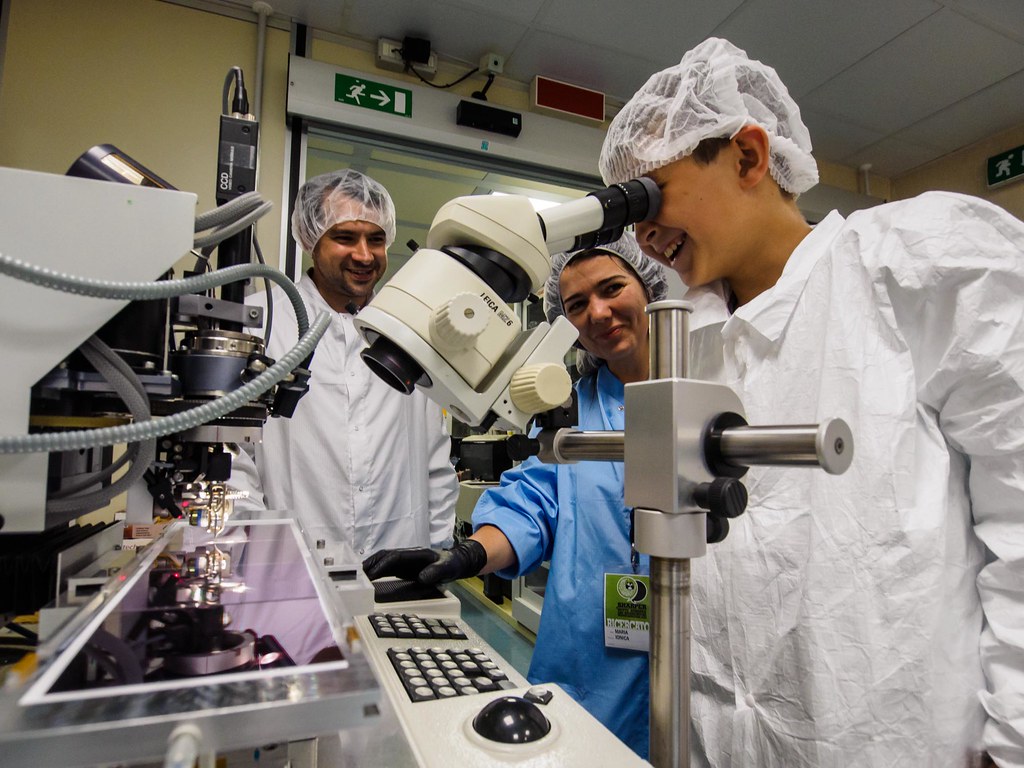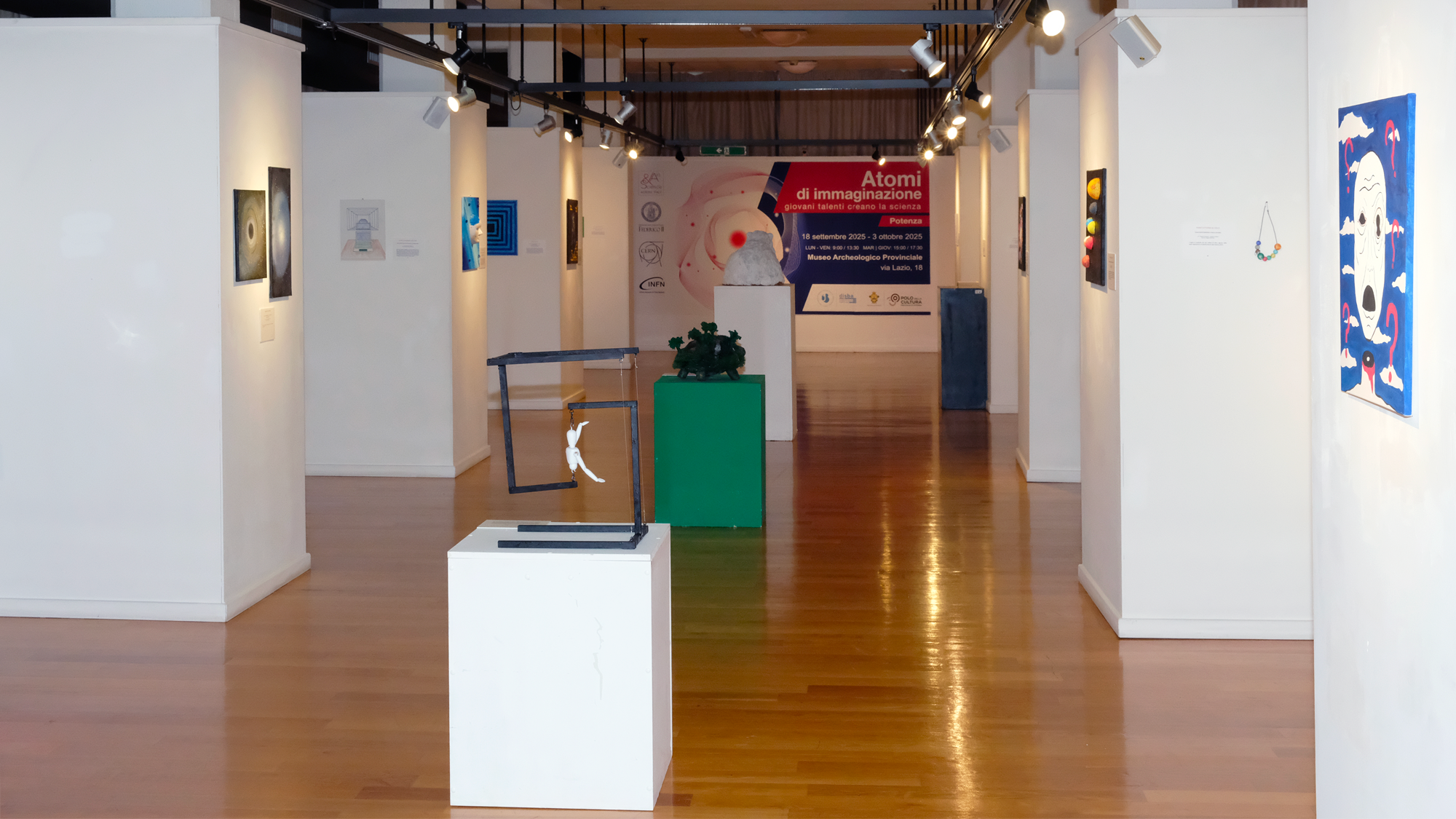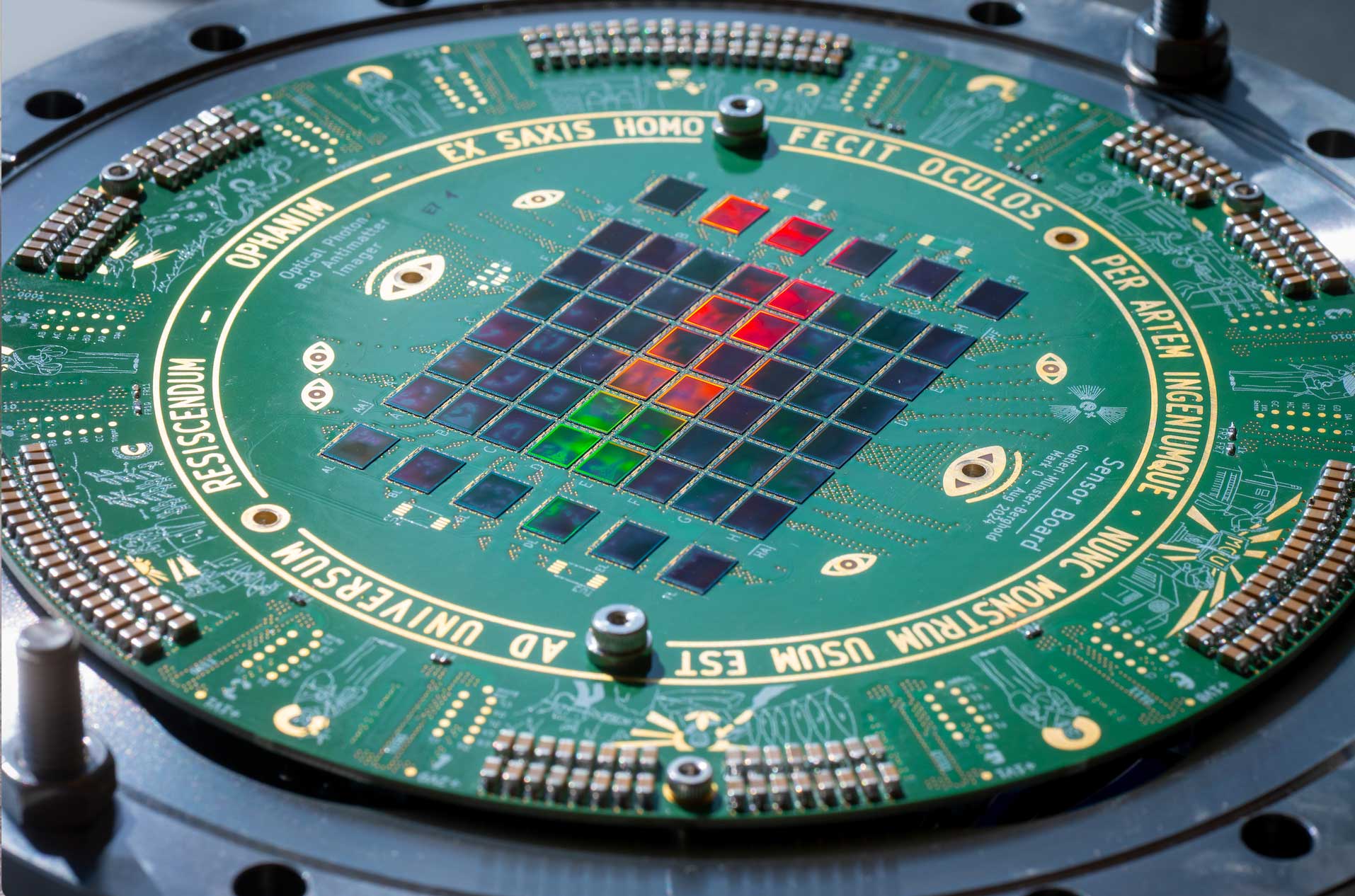The AEḡIS experiment (Antimatter Experiment: Gravity Interferometry and Spectroscopy), ongoing at CERN with the collaboration of INFN, has achieved an important result published today, April 2, 2025, in the journal Science Advances (https://www.science.org/doi/10.1126/sciadv.ads1176).
AEḡIS researchers have developed an innovative idea to study antimatter: they “hacked” an image sensor commonly used in smartphone cameras, which is normally used to convert incoming light into a digital image, modifying it to reveal incoming antiparticles. The use of these sensors (called CMOS, Complementary Metal Oxide Semiconductor), which have silicon pixels smaller than 1 micrometer, has led to unprecedented results.
The experiment has indeed set a new world record for resolution in detecting antimatter annihilations, managing to determine the impact position of antiprotons on the sensor’s surface with an accuracy of 600 nanometers. In addition to the impact point, the sensor has proven capable of revealing the trajectory of the fragments resulting from the annihilation with the highest resolution ever achieved in a pixel detector.
AEḡIS is one of the active experiments in the Antimatter Factory at CERN and includes INFN among its main funders. Its scientific goal is to measure the gravitational acceleration of antihydrogen. This measurement aims to verify the validity of Einstein’s weak equivalence principle, one of the cornerstones of General Relativity, even for antimatter.
“This sensor represents a real turning point for observing the small deviation caused by gravity in a horizontally moving antihydrogen beam, and it could have a significant impact more generally for particle physics, especially in experiments where high position resolution is crucial,” comments Ruggero Caravita, INFN researcher at TIFPA in Trento and head of the AEḡIS collaboration. “Thanks to this extraordinary resolution, we are also able to distinguish different types of annihilation fragments, nuclear fragments, alpha particles, protons, and pions, which will allow us to make a leap forward in understanding the interactions between low-energy antiprotons and materials,” concludes Caravita.
“However, a single sensor is not sufficient for most purposes, given its small size,” comments Francesco Guatieri from the Research Neutron Source FRM II at the Technical University of Munich, coordinator of the research. “For this reason, we integrated 60 of these sensors into a single device, the Optical Photon and Antimatter Imager (OPHANIM), achieving the photographic detector with the highest number of pixels currently operational: 3840 Mpixel. This allows us to have both extremely high resolution and a good particle collection area.” The detector created is the electronic equivalent of a photographic plate. Comparing the resolution of each sensor with the particle tracking record in an emulsion detector, which stands at around 300 nanometers (achieved by the OPERA experiment at the INFN Gran Sasso National Laboratory in 2008), it is observed that the new device reaches a practically equivalent resolution, but in electronic mode, making the data immediately readable.
INFN is among the scientific leaders and main funders of the AEḡIS experiment, which has always been Italian-led, and is now included in the context of the LEA (Low Energy Antimatter) collaboration of INFN, which groups together the various scientific activities of the Institute in this sector. The AEḡIS scientific collaboration includes research groups from the INFN TIFPA National Center and the University of Trento, from the INFN division and the State University of Milan, from the Polytechnic University of Milan, from the INFN division of Pavia and from the University of Brescia.
